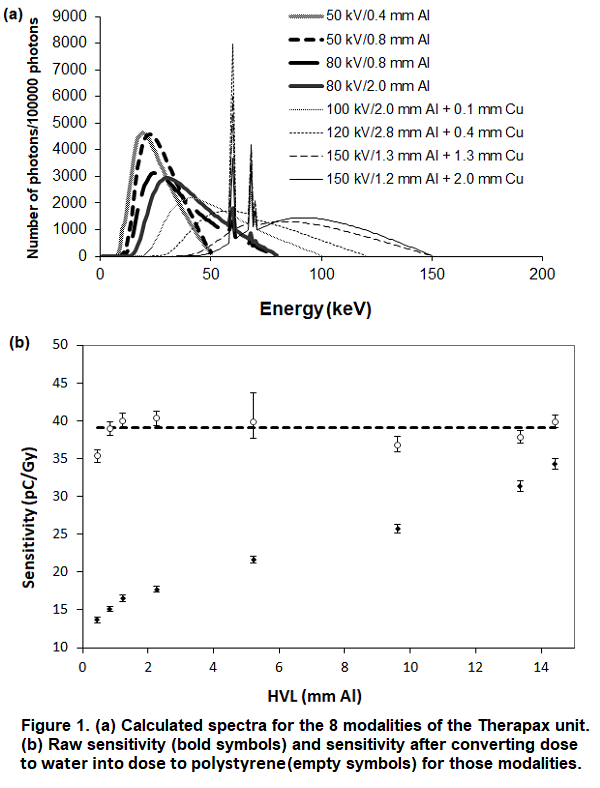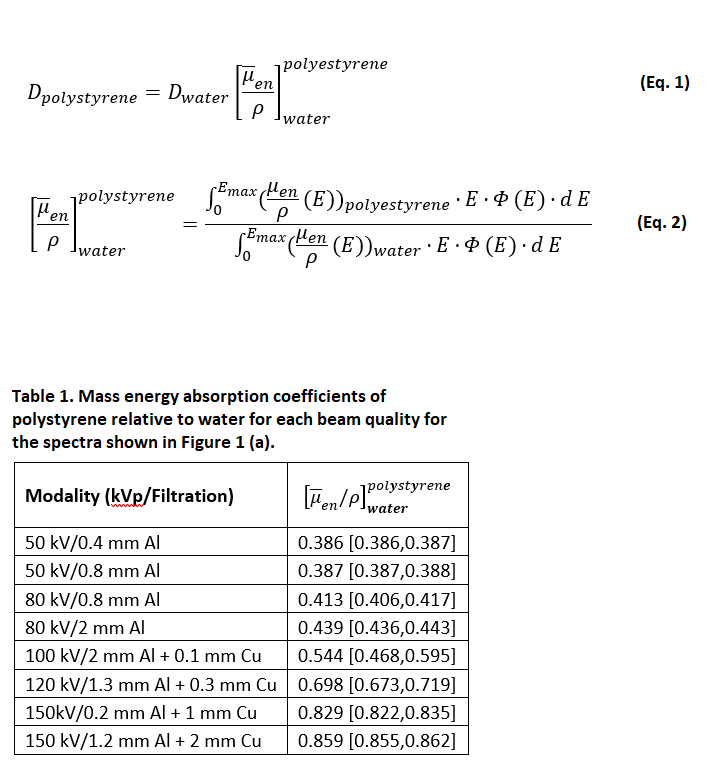Energy-dependence of the Exradin W1 scintillator for low and medium-energy x-ray beams
Pablo Carrasco de Fez,
Spain
PO-1795
Abstract
Energy-dependence of the Exradin W1 scintillator for low and medium-energy x-ray beams
Authors: Pablo Carrasco de Fez1, Núria Jornet Sala1, Pedro Gallego Franco1, Jaime Pérez-Alija Fernández1, Cristina Ansón Marcos1, Nagore García Apellaniz1, Natalia Tejedor Aguilar1, Marta Barceló Pagès1, Helena Vivancos Bargalló2, Fátima María Leo Martínez1, Alejandro Domínguez Perea1, Agustín Ruiz Martínez1
1Hospital de la Santa Creu i Sant Pau, Servei de Radiofísica i Radioprotecció, Barcelona, Spain; 2Hospital de la Santa Creu i Sant Pau, Servei de Radiofísica i Radioprotecció, BArcelona, Spain
Show Affiliations
Hide Affiliations
Purpose or Objective
- To study the energy dependence of the Exradin W1 scintillator for x-ray beams from a surface therapy treatment unit.
- To clarify the origin of the dependence.
Material and Methods
Raw sensitivities (reading of the detector in pC divided by the absorbed dose determined by means of an ion chamber in Gy) for an Exradin W1 plastic scintillator dosimeter were determined for each modality at a Pantak Therapax SXT150 treatment unit with 8 beam modalities ranging from 50 kV and 0.4 mm Al filtration to 150 kV and 1.2 mm Al plus 2 mm Cu filtration. Absorbed dose to water was determined by means of TRS398 code of practice in a PMMA phantom with a PTW23342 ion chamber placed at the surface for low-energy beams, or in a PTW MP1 water phantom with a PTW30013 ion chamber placed at 2 cm depth for medium-energy beams. The calibration coefficient of both detectors was traceable to a SSDL.
Exradin W1 is made of clear polystyrene. As a result, it measures dose to polystyrene inside water. Assuming W1 is a large photon detector for low and medium x-ray beams, dose to water is related to dose to polystyrene as shown in Eq. 1.
To calculate the mass energy absorption coefficients of polystyrene relative to water for each x-ray beam we used monoenergetic NIST coefficients and the XCOMP5 software (Nowotny et al.). This software was used to derive the spectra we used to calculate weighted average coefficients of polystyrene relative to water for each beam according to Eq. 2.
Uncertainties were estimated according to GUM assuming manufacturer specifications. Sensitivity vs HVL, calculated using dose to water, and calculated using dose to polystyrene, were plotted.
Results
Figure 1a shows the calculated spectra by means of XCOMP5 for each beam quality following Pantak specifications.
Table 1 shows average mass energy absorption coefficients of polystyrene relative to water for each beam quality.
Figure 1b shows the raw sensitivity for each modality (bold symbols), and sensitivity after converting dose to water into dose to polystyrene (empty symbols). When doing so, the sensitivity became flat (dashed line). Uncertainty bars correspond to k=1. It is worth noting that bars for empty symbols are an order of magnitude larger than those for bold symbols.


Conclusion
- W1 is non-water equivalent at low and medium energy x-ray beams. The lower the kV, the larger the difference.
- W1 response is energy-independent when absorbed dose is expressed as absorbed dose to polystyrene.
- However, independent calibration for each modality is recommended to minimize uncertainties.